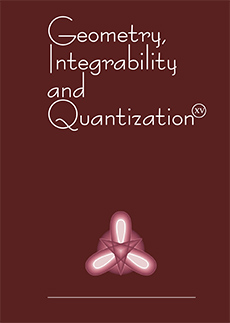Abstract
Vesicle shapes with axial symmetry are modeled using the Cassinian oval, which when rotated leads to a variety of surfaces specified as the level sets of algebraic functions. A continuous set of shapes including the sphere, torus, biconcave discocyte and dumbbell are described by considering a Cassinian oval with a focus distance that is a purely imaginary number. Although these surfaces are not exact solutions of the vesicle shape equation, they reveal some qualitative geometric properties that are difficult to examine by currently available numerical or exact solutions. The relation between the volume of the vesicle at constant surface area and the homogeneity index is derived. Going from the implicit to the explicit coordinatization of these surfaces, we find their fundamental forms and curvatures in a form convenient for experimenters. The integrals specifying the volume and surface area are evaluated analytically in a form relevant to the sphere geometry. The free energy corresponding to the bending of the outer membrane of the vesicles, modeled by the Cassinian oval, is plotted numerically as a function of the form factor or the reduced volume. The effect of the so-called Helfrich spontaneous curvature on the energy minimization is also examined
Information
Digital Object Identifier: 10.7546/giq-2-2001-82-92


